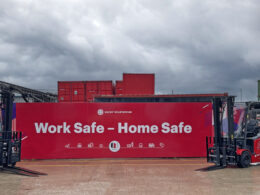At the end of 2013, Citrix took a snapshot of its global customer base to find out which types of applications were in use. While the majority of apps deployed were Windows-based (64%), more than a third of the enterprises were using a mixture of mobile apps, comprising web apps (20%), software as a service (10%) and native mobile apps (6%).
Citrix predicts that the proportion of mobile apps will increase to almost half (46%) during 2014. By its nature, the logistics industry stands to make substantial productivity gains from this trend.
When developing mobile apps for logistics, one major consideration facing organisations is whether to employ native development tools, to support dedicated Windows, Blackberry, Android, or Apple devices, or to go the HTML5, or hybrid app route.
My previous column highlighted the difficulties faced by logistics managers who are trying to keep pace with creating and updating apps across multiple device platforms that they support. This being the case, one could argue that developing a HTML5 or hybrid app is a no brainer, since the code can be deployed across multiple devices without the need for individual native software development kits (SDKs) and coding skillsets
Certainly, HTML5 provides flexibility, because it allows apps to be run on almost every platform. However, because it is web-based, it does not provide the same level of user experience as a native mobile OS interface.
Native apps tend to provide more seamless access to local resources on the device, such as geolocation, barcode scanners and camera functionality.
Often, a good middle ground is hybrid app development. Hybrid development combines the best of both the native and HTML5 worlds. This type of app client is also developed using standard Web Technologies (HTML5, CSS3 and JavaScript) but is then wrapped inside a container that provides access to native platform features. This development option allows for rapid application development for multiple devices without compromising on some native features.
While logistics organisations recognise the value of enterprise mobility, they are not about to let mobile app developers pick and choose whichever development environment they like and push code to the cloud, without taking the app through a rigorous test and pre-production phase, to ensure that corporate information is secured.
A major change that we have observed in the last two years is that enterprise mobility projects are no longer the sole remit of the IT department. Within large enterprises, multiple business units are working on developing mobile apps. These business units need to be able to collaborate with IT, to enable the business to innovate, while allowing IT teams to manage the back end integration, policy management and centralised control of data security.
The largest logistics firms tend to use a combination of front-end, back-end and third party app developers. All of these teams shape the final apps that are rolled out to the workforce. As a result, mobile app development projects have become much more complex to manage and scale and demand support for greater collaboration.
With so many stakeholders, requiring different devices, a variety ofapps (native, HTML5, hybrid, web), user interfaces tailored to their roles and a range of application functionality, a number of coding languages, standard toolkits and frameworks have emerged.
An open, cloud-based architecture, with support for standard app development toolkits and JavaScript frameworks, offers logistics firms the required agility, scale and affordability for their apps today, while ensuring that the apps are sustainable as mobile devices and industry standards evolve.
Importantly, by using a mobile application platform that provides centralised control of security, logistics businesses can enforce the usual policies that are followed on desktop apps and govern the data that is shared to and from the business via mobile apps. This model provides employees with the flexibility of using mobile apps on the devices that are best suited to their roles, enabling them to be more productive and allowing the business to get more mileage from their apps.
References:
Citrix Mobility Report: a look ahead, December 2013 http://www.citrix.com/content/dam/citrix/en_us/documents/products-solutions/citrix-mobility-report-a-look-ahead.pdf
My Logistics Magazine: “Mobile apps for logistics, in for the long haul?” https://mylogisticsmagazine.com/mylogisticsmagazine/road/mobile-logistics-apps-in-for-the-long-haul/












